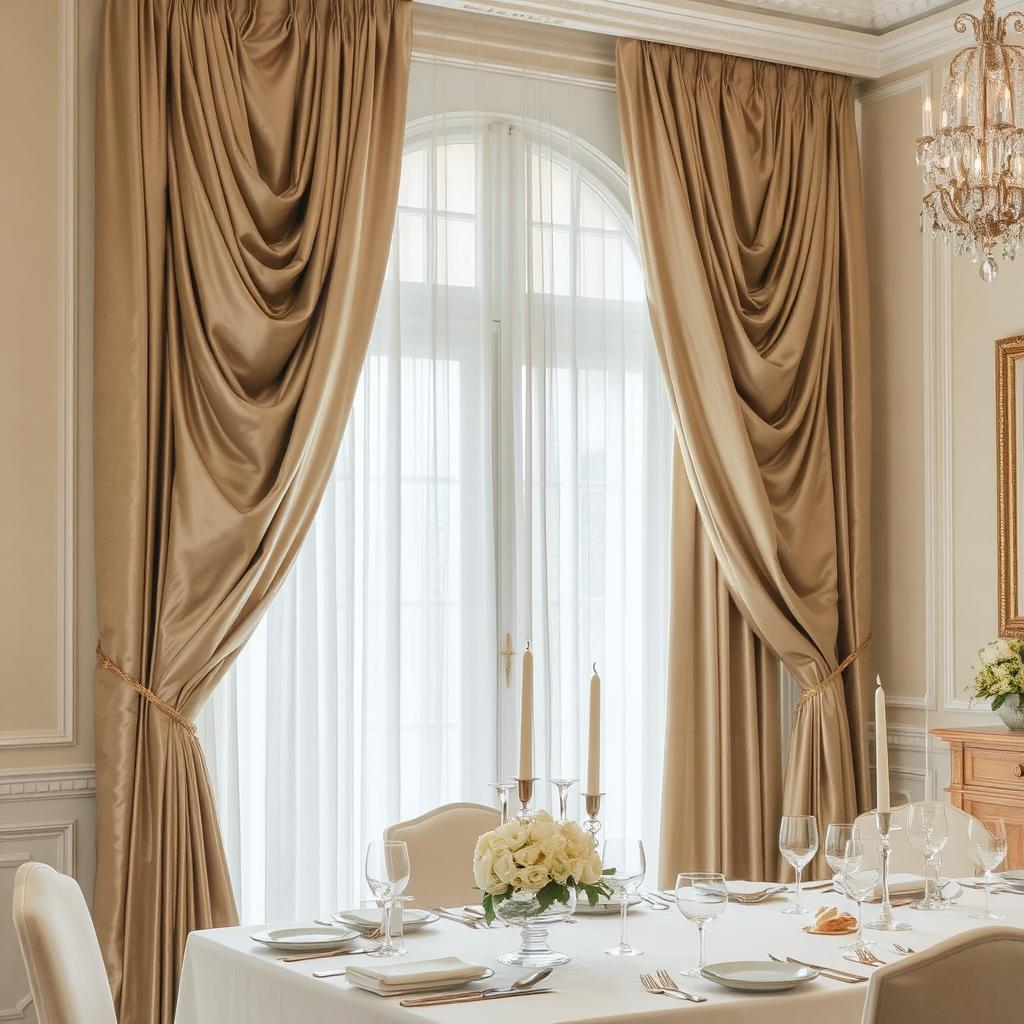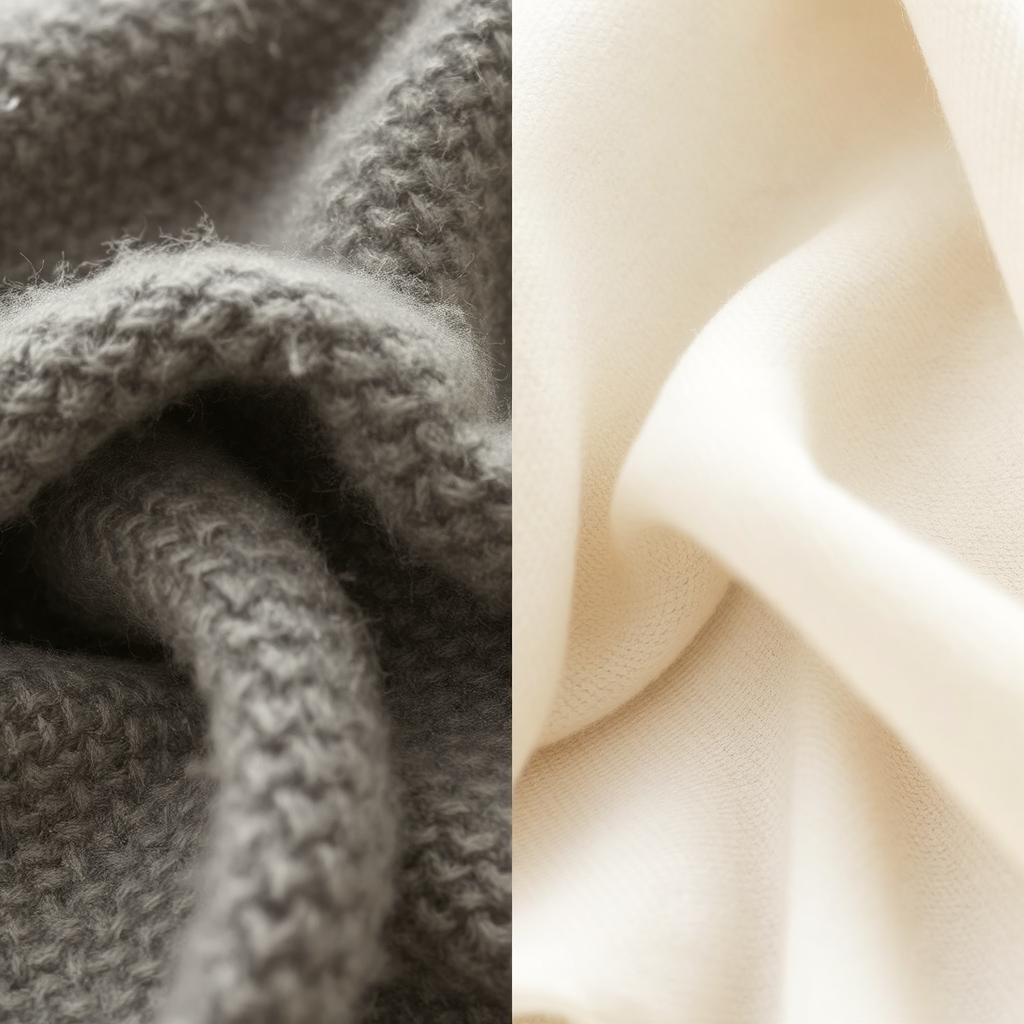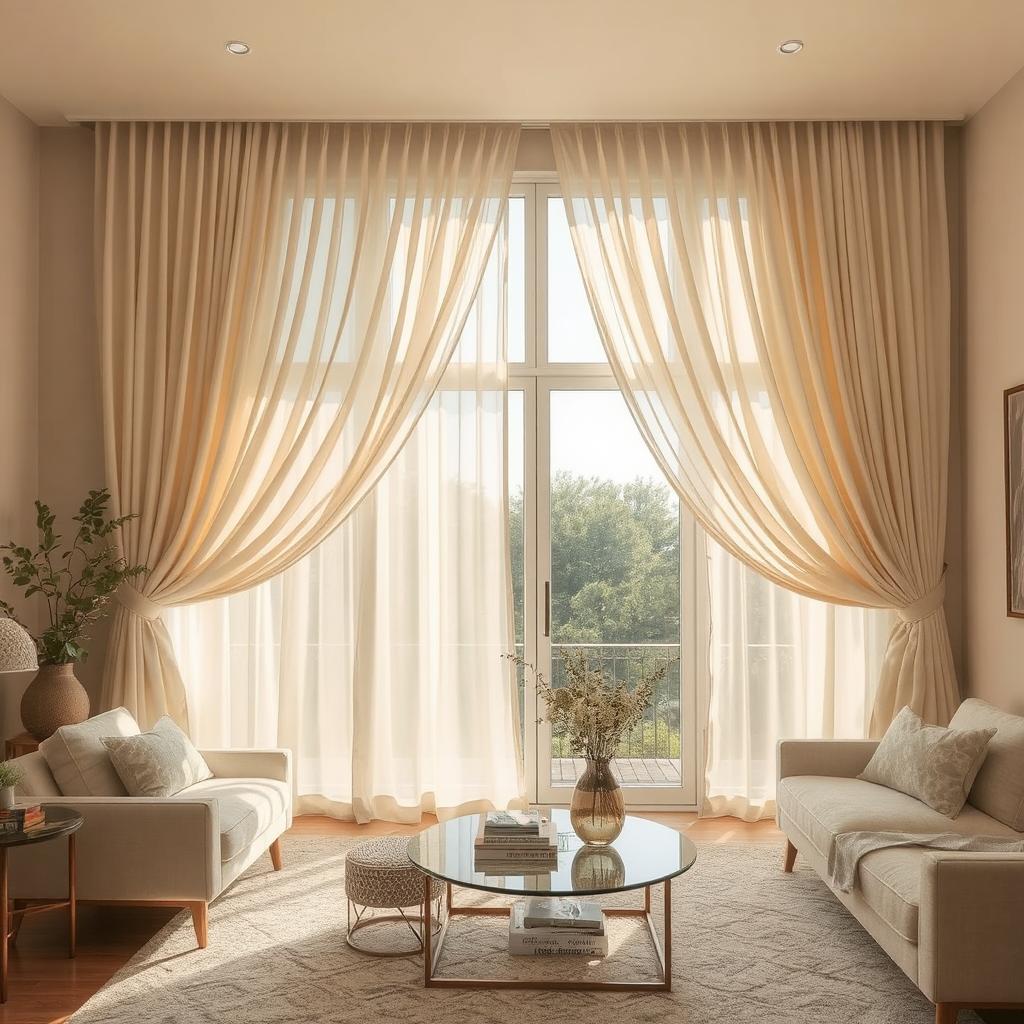Rayon curtains have become a popular choice among homeowners seeking an elegant, luxurious look without the high price tag. Rayon is known for their silky appearance, soft texture, and ability to catch light beautifully, rayon curtains can transform a living space with their graceful drape and sheen. They are often chosen for their versatility, fitting both modern and traditional decor styles. But are rayon curtains the right choice for your home?? In this guide, we will explore the pros and cons of rayon curtains, helping you decide whether they fit your home decor style, budget, and maintenance preferences. Read on to learn more about rayon curtains, their benefits, drawbacks, and best use cases.
What Are Rayon Curtains?
Rayon curtains are made from rayon fabric, a semi-synthetic material derived from natural cellulose fibers, typically wood pulp. The production process involves chemically treating these fibers to create a soft, silk-like fabric often used as a budget-friendly alternative to natural silk.
Rayon curtains are admired for their:
- Soft, smooth texture that feels luxurious.
- Silky sheen that adds elegance to any room.
- Lightweight drape, making them perfect for formal spaces.
Due to their aesthetic appeal, rayon curtains are commonly chosen for living rooms, bedrooms, and other areas where style takes precedence over durability. However, as with any material, rayon has both advantages and disadvantages that should be considered before making a purchase.
Rayon Curtains: Pros and Cons
Pros of Rayon Curtains
- Elegant Appearance
- Rayon curtains offer a rich, silky sheen that closely resembles natural silk, making them ideal for creating a luxurious atmosphere in your home.
- Soft and Smooth Texture
- The fabric is incredibly soft to the touch, providing a cozy and inviting feel to any room.
- Affordable Luxury
- Compared to expensive silk curtains, rayon provides a similar look and feel at a fraction of the cost, making it perfect for budget-conscious decorators.
- Good Drapability
- The lightweight nature of rayon allows the curtains to hang beautifully, creating a fluid, elegant drape that enhances the overall decor.
- Variety in Designs
- Available in a wide range of colors, patterns, and finishes, rayon curtains can easily match different home decor styles from modern minimalism to classic elegance.
Cons of Rayon Curtains
- Wrinkles Easily
- Rayon curtains are prone to wrinkling, which can affect their elegant appearance. Regular steaming or ironing may be required to maintain a smooth look.
- Moisture Sensitivity
- Rayon fabric absorbs moisture easily, making it less suitable for humid environments as it may lose its shape or become mildewed over time.
- Prone to Shrinkage
- If not handled properly, rayon curtains can shrink after washing. Dry cleaning or following specific washing instructions is recommended to avoid this issue.
Best Uses for Rayon Curtains

Living Rooms and Bedrooms:
Rayon curtains are an excellent choice for living rooms and bedrooms when you want to create a soft, sophisticated ambiance. They offer a luxurious, smooth texture and are lightweight, making them ideal for spaces where you seek elegance without the need for heavy durability. Their fluid drape helps enhance the overall aesthetic, contributing to a cozy yet refined atmosphere. These curtains are particularly effective in creating a romantic, welcoming environment.
Formal Spaces:
Rayon curtains are often used in formal settings like dining rooms, reception areas, or high-end lounges. Their smooth texture and slight sheen lend an air of sophistication to any room, making them ideal for spaces where style is a priority. They are perfect for decorative purposes where they won’t be subjected to frequent handling, as they maintain their elegant look and feel. Their delicate appearance adds a touch of luxury, enhancing the décor in formal environments.
Layering:
Rayon curtains work beautifully when layered with heavier fabrics like velvet or linen. This layered approach creates a luxurious, rich texture and depth in your room. Rayon’s lightness and sheen offer a contrast when paired with thicker materials, giving your window treatments a sophisticated, multi-dimensional appearance. This is especially useful in spaces where you want to achieve a balanced aesthetic without overwhelming the room with heavy curtains. The addition of rayon curtains enhances the overall design by adding softness and elegance.
Comparison: Rayon vs. Other Curtain Fabrics
Rayon vs. Polyester Curtains:
- Rayon: Rayon curtains provide a more refined, luxurious look, often resembling silk with their fluid drape and smooth texture. They have a soft sheen that adds a touch of elegance to any room. However, rayon is more delicate and requires more care, including regular cleaning and proper maintenance to avoid fading and wear.
- Polyester: Polyester, on the other hand, is known for its durability and ease of maintenance. It resists wrinkles, is more affordable, and can stand up to regular use and washing. While polyester may lack the luxurious feel of rayon, it offers superior practicality for high-traffic areas.
Also Read:
Cotton vs. Rayon Curtains:
- Rayon: Rayon has a softer, silk-like feel and provides a luxurious drape that makes it ideal for formal settings. While not as breathable as cotton, rayon’s sheen and softness can make it a better choice for achieving an elegant, refined look in spaces like living rooms or bedrooms.
- Cotton: Cotton curtains are breathable, durable, and easy to maintain, making them ideal for casual or everyday use. They allow more airflow and are better suited for warmer climates. However, cotton tends to wrinkle more easily and lacks the luxurious sheen and drape that rayon offers.
Rayon vs. Linen Curtains:
- Rayon: Rayon is generally more suited for formal spaces, as its silky appearance and smooth texture give a refined look. It drapes beautifully and adds sophistication, making it perfect for places where style and aesthetics take precedence. Rayon, however, is not as durable as linen and requires more delicate care.
- Linen: Linen is a sturdier fabric and better suited for more casual or rustic spaces. It has a more natural, textured appearance and is typically more durable than rayon. Linen curtains are perfect for creating a laid-back, airy atmosphere, but they lack the sheen and smoothness that rayon provides. Linen is also more breathable, which makes it a better option for rooms that need natural ventilation.
Also Read:
Linen Curtains Pros and Cons: Are They Right for Your Home??
By understanding these differences, you can make an informed choice based on the atmosphere and functionality you want to create in your space.
Care and Maintenance Tips for Rayon Curtains
Recommended Cleaning Methods (Dry Cleaning Preferred):
Rayon curtains require careful maintenance to preserve their texture and appearance. The best method of cleaning rayon curtains is dry cleaning. This process ensures that the fabric remains intact, retains its luxurious drape, and avoids damage from harsh detergents or water. Dry cleaning removes dirt and stains without risking the shrinkage or fading that can occur with other cleaning methods.
If dry cleaning isn’t an option, you can gently hand wash rayon curtains in cold water using a mild detergent. Avoid wringing the fabric to prevent distortion. After washing, hang the curtains to air dry, as direct heat from a dryer can cause the fibers to shrink or become misshapen.
How to Avoid Shrinking and Wrinkling:
To avoid shrinkage, it’s essential to handle rayon curtains with care. Always wash in cold water and air dry them. Never use high heat, as this can cause the fabric to shrink. If ironing is necessary, always use the lowest heat setting and place a cloth between the iron and the fabric to protect its delicate surface.
Rayon is prone to wrinkling, so it’s important to handle it gently. When hanging, ensure the curtains are evenly spaced and allow them to naturally release wrinkles. If wrinkles remain, gently steam the fabric or use a low-heat iron to smooth out the creases. For heavy wrinkles, consider steaming the curtains in place to avoid unnecessary stress on the fibers.
Is Rayon Good for Curtains?
Style:
Rayon curtains are an excellent choice for those looking to create a refined, elegant atmosphere in their homes. The fabric’s smooth, shiny texture adds a luxurious touch to any room, making it perfect for living rooms, bedrooms, or formal spaces where aesthetics are key. Rayon drapes beautifully, offering a soft, flowing appearance that can elevate the overall décor of a room.
Budget:
Rayon curtains tend to be more affordable than premium fabrics like silk, making them a good option for those seeking a budget-friendly alternative without sacrificing style. While they are more expensive than synthetic fabrics like polyester, rayon offers a luxurious appearance at a more accessible price point.
Maintenance Needs:
Rayon curtains require more maintenance than other fabrics, primarily due to their delicate nature. Dry cleaning is often recommended, and extra care is needed to prevent shrinking and wrinkling. However, with the right care, rayon curtains can last for years and continue to enhance the aesthetic of your home.
In conclusion, rayon curtains are a great choice for those prioritizing style over durability and ease of maintenance. If you are looking for an elegant, soft drape that brings sophistication to your space, and you don’t mind a little extra care, rayon is definitely worth considering.

Frequently Asked Questions
Are Rayon Curtains Durable?
Rayon curtains are not as durable as fabrics like polyester or linen. While they are relatively strong, rayon is a more delicate fabric that requires careful maintenance. Regular washing, exposure to sunlight, or excessive handling can cause the material to degrade over time. If durability is a priority, consider layering rayon curtains with a more robust fabric or opting for a different material altogether.
Can Rayon Curtains Be Machine Washed?
It is generally not recommended to machine wash rayon curtains, as the fabric is prone to shrinking and losing its shape. While some rayon curtains may have care labels indicating machine washability, it’s safer to opt for hand washing or dry cleaning to protect the fabric’s integrity. If you choose to machine wash, use a gentle cycle with cold water and mild detergent, and avoid using a dryer.
Is Rayon Cotton
No, rayon is not cotton, but it is a semi-synthetic fiber made from natural sources like wood pulp, bamboo, or other plant materials. While both rayon and cotton come from natural sources, their processing methods are different:
- Cotton is a natural fiber directly obtained from the cotton plant and spun into fabric.
- Rayon is a regenerated fiber made from chemically processed cellulose (from wood or bamboo).
However, rayon can feel similar to cotton in softness and breathability, especially when blended together (rayon-cotton blends are common in textiles).
Is rayon cheap ?
Yes, rayon is generally considered an affordable fabric, but its price varies depending on the type and quality. Here’s a breakdown:
- Regular Rayon (Viscose) → Affordable and cheaper than silk, making it a budget-friendly option for curtains.
- High-Quality Rayon (Modal, Lyocell) → More expensive than basic rayon but still cheaper than silk or linen.
- Rayon Blends (Rayon-cotton, rayon-polyester) → Can be more durable and moderately priced.
Overall, rayon is a cost-effective alternative to silk while offering a similar luxurious look.
Is rayon cotton or polyester
Rayon is neither cotton nor polyester—it falls somewhere in between.
- Rayon is a semi-synthetic fiber made from natural cellulose (wood pulp, bamboo, etc.) but undergoes chemical processing.
- Cotton is a 100% natural fiber, directly harvested from the cotton plant.
- Polyester is a fully synthetic fiber made from petroleum-based chemicals
Do rayon curtains fade in sunlight?
Yes, rayon curtains can fade if exposed to direct sunlight for long periods. To preserve their color, it’s recommended to use them in areas with indirect sunlight or install window treatments like blinds or shades to protect them from UV damage.
Are rayon curtains eco-friendly?
Rayon is a semi-synthetic fiber, derived from wood pulp. While it is biodegradable, the process of manufacturing rayon can involve harmful chemicals. However, some brands offer eco-friendly rayon curtains made with sustainable practices.
How do I prevent rayon curtains from wrinkling after washing?
Rayon is prone to wrinkling, but to prevent this, avoid machine washing and drying. Instead, opt for hand washing or dry cleaning. Hanging the curtains while they’re still damp and using a steam iron can help smooth out wrinkles.
Are rayon curtains available in a variety of colors and patterns?
Yes, rayon curtains come in a wide range of colors, patterns, and styles. Whether you’re looking for solid hues, textured designs, or elegant prints, rayon provides versatility to match various interior décor styles.
What is the best way to maintain the sheen of rayon curtains?
To maintain the sheen of rayon curtains, avoid using harsh detergents or bleach. Instead, wash them gently by hand or have them dry cleaned. Additionally, avoid hanging them in direct sunlight for prolonged periods, as UV rays can dull the sheen.
Are rayon curtains better for winter or summer?
Rayon curtains are suitable for both winter and summer due to their light and breathable nature. In winter, they offer a soft touch without too much heat insulation, while in summer, they allow a comfortable amount of airflow and can help regulate temperature.
How do rayon curtains compare to linen in terms of energy efficiency?
Rayon curtains provide some degree of energy efficiency by reducing heat loss through windows. However, linen tends to be more energy-efficient due to its thicker weave, which better insulates rooms. For better energy-saving properties, consider pairing rayon curtains with an insulating liner.
How can I make my rayon curtains last longer?
To make your rayon curtains last longer, follow proper care instructions, such as dry cleaning, avoiding machine washing, and using low heat for ironing. Regularly shake out the curtains to prevent dust buildup, and rotate them periodically to minimize wear in specific areas.
Conclusion
Rayon Curtains Pros and Cons Summary
Pros:
Rayon curtains offer an elegant, silky sheen similar to natural silk, providing a luxurious look at an affordable price. They are soft, smooth, and drape beautifully, enhancing the decor with a wide variety of designs and colors to suit different styles.
Cons:
Rayon curtains wrinkle easily and require regular maintenance. They are sensitive to moisture, making them unsuitable for humid areas, and can shrink if not handled carefully during washing.
Best Uses:
Ideal for living rooms and bedrooms where elegance and softness are desired, but moisture exposure is minimal.
When choosing rayon curtains, consider your overall home décor goals. If you are aiming for a sophisticated, elegant look and are willing to invest in proper care, rayon can be a beautiful addition to your space. However, if you need curtains that require minimal maintenance and can withstand heavy use, you may want to explore other fabrics. Rayon is best suited for those who prioritize style and are ready to maintain its luxurious appearance over time.



